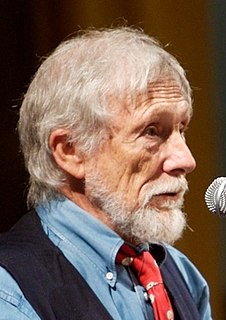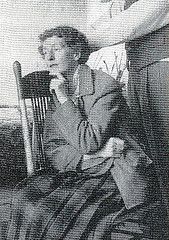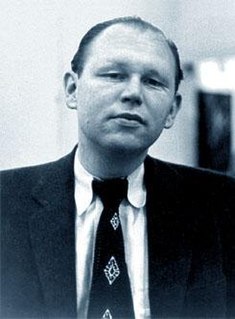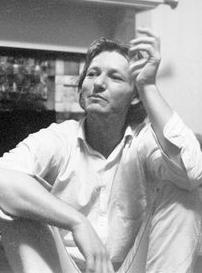
Irwin Allen Ginsberg was an American poet and writer. As a student at Columbia University in the 1940s, he began friendships with William S. Burroughs and Jack Kerouac, forming the core of the Beat Generation. He vigorously opposed militarism, economic materialism, and sexual repression, and he embodied various aspects of this counterculture with his views on drugs, sex, multiculturalism, hostility to bureaucracy, and openness to Eastern religions.

Gary Snyder is an American man of letters. Perhaps best known as a poet, he is also an essayist, lecturer, and environmental activist with anarchoprimitivist leanings. He has been described as the "poet laureate of Deep Ecology". Snyder is a winner of a Pulitzer Prize for Poetry and the American Book Award. His work, in his various roles, reflects an immersion in both Buddhist spirituality and nature. He has translated literature into English from ancient Chinese and modern Japanese. For many years, Snyder was an academic at the University of California, Davis and for a time served as a member of the California Arts Council.
The Beat Generation was a literary movement started by a group of authors whose work explored and influenced American culture and politics in the post-war era. The bulk of their work was published and popularized by Silent Generationers in the 1950s. The central elements of Beat culture are the rejection of standard narrative values, making a spiritual quest, the exploration of American and Eastern religions, the rejection of economic materialism, explicit portrayals of the human condition, experimentation with psychedelic drugs, and sexual liberation and exploration.

"Howl", also known as "Howl for Carl Solomon", is a poem written by Allen Ginsberg in 1954–1955 and published in his 1956 collection Howl and Other Poems. The poem is dedicated to Carl Solomon.

Lawrence Monsanto Ferlinghetti was an American poet, painter, social activist, and co-founder of City Lights Booksellers & Publishers. The author of poetry, translations, fiction, theatre, art criticism, and film narration, Ferlinghetti was best known for his second collection of poems, A Coney Island of the Mind (1958), which has been translated into nine languages and sold over a million copies. When Ferlinghetti turned 100 in March 2019, the city of San Francisco turned his birthday, March 24, into "Lawrence Ferlinghetti Day".

Kenneth Charles Marion Rexroth (1905–1982) was an American poet, translator, and critical essayist. He is regarded as a central figure in the San Francisco Renaissance, and paved the groundwork for the movement. Although he did not consider himself to be a Beat poet, and disliked the association, he was dubbed the "Father of the Beats" by Time magazine. Largely self-educated, Rexroth learned several languages and translated poems from Chinese, French, Spanish, and Japanese.

Joanne Kyger was an American poet. The author of over 30 books of poetry and prose, Kyger was associated with the poets of the San Francisco Renaissance, the Beat Generation, Black Mountain, and the New York School.

Madeline Gleason was a United States poet and dramatist. She was the founder of the San Francisco Poetry Guild and, in 1947, the director of the first poetry festival in the United States, laying the groundwork for what became known as the San Francisco Renaissance. She was, with Helen Adam, Barbara Guest, and Denise Levertov, one of only four women whose work was included in Donald Allen's landmark anthology, The New American Poetry 1945-1960 (1960).

Jack Spicer was an American poet often identified with the San Francisco Renaissance. In 2009, My Vocabulary Did This to Me: The Collected Poetry of Jack Spicer won the American Book Award for poetry. He spent most of his writing-life in San Francisco.

The New American Poetry 1945–1960 is a poetry anthology edited by Donald Allen and published in 1960. It aimed to pick out the "third generation" of American modernist poets, and included quite a number of poems fresh from the little magazines of the late 1950s. In the longer term it attained a classic status, with critical approval and continuing sales. It was reprinted in 1999. As of 2022, Edward Field and Gary Snyder are the only contributors still living.

The Dharma Bums is a 1958 novel by Beat Generation author Jack Kerouac. The basis for the novel's semi-fictional accounts are events occurring years after the events of On the Road. The main characters are the narrator Ray Smith, based on Kerouac, and Japhy Ryder, based on the poet and essayist Gary Snyder, who was instrumental in Kerouac's introduction to Buddhism in the mid-1950s.

The City Lights Pocket Poets Series is a series of poetry collections published by Lawrence Ferlinghetti and City Lights Books of San Francisco since August 1955.

Kirby Doyle, born Stanton Doyle, was an American poet. He was featured in the New American Poetry anthology, with the so-called "third generation" of American modernist poets. He was one of the San Francisco Renaissance poets who laid the groundwork for Beat poetry in San Francisco. Doyle also wrote novels.

The Six Gallery reading was an important poetry event that took place on Friday, October 7, 1955, at 3119 Fillmore Street in San Francisco.
Donald Merriam Allen was an American editor, publisher and translator of American literature. He is best known for his project The New American Poetry 1945-1960 (1960), one of the anthologies of contemporary American writing he released.
Ronald William Loewinsohn was an American poet and novelist who was associated with the poetry of the San Francisco Renaissance since his inclusion in Donald Allen's 1960 poetry anthology, The New American Poetry 1945–1960. He was Professor Emeritus of English at the University of California, Berkeley.
The Berkeley Poetry Conference was an event in which individuals presented their views and poems in seminars, lectures, individual readings, and group readings at California Hall on the campus of the University of California, Berkeley during July 12–24, 1965.
Richard William McBride was an American beat poet, playwright and novelist. He worked at City Lights Booksellers & Publishers from 1954 to 1969.
Knute Stiles was a union organizer, painter, collagist, art critic, poet and entrepreneur. He was born in Minnesota, the son of the state's first female physician. He went to the St. Paul Art School, and after World War II, attended Black Mountain College in North Carolina.












